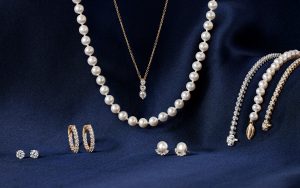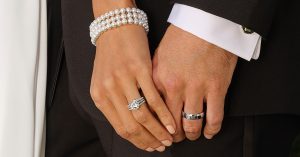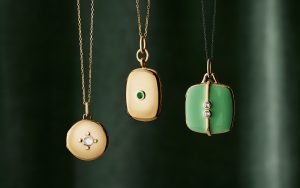Resizing Your Engagement Ring Shouldn’t Be A Thing

An engagement ring is one of the most important, meaningful and valuable pieces of jewelry in your collection. It’s also a piece you’ll only take off for very specific reasons. Finding a ring that fits perfectly is a critical piece of the engagement puzzle. And, if you want to keep your proposal a complete surprise, getting the right ring size can seem impossible. Our experts have some advice for you if your ring ends up being the wrong size.
HOW TO TELL IF YOUR ENGAGEMENT RING IS TOO LARGE OR SMALL
Many people believe insurance is the most important aspect of protecting your engagement ring, but a proper fit is your first line of defense. Your engagement ring should slide on relatively easily and resist slightly when removed. Your finger shouldn’t bulge around the ring (a sign that it’s too small), but the ring shouldn’t slide too freely either, which would make it at risk of falling off. If you’re not really sure if it’s too loose or tight (and because your finger size fluctuates every day), we recommend wearing the ring for a few days to make sure it actually needs resizing.
Most rings can easily be resized—it’s so easy that Blue Nile does it for free. Our engagement ring experts can provide you with all of the information you need to know about ring resizing. Here we’ve included some pro tips and alternatives for you to achieve a great fit.
Not sure if your ring is the right size? Learn more about how to measure ring size.
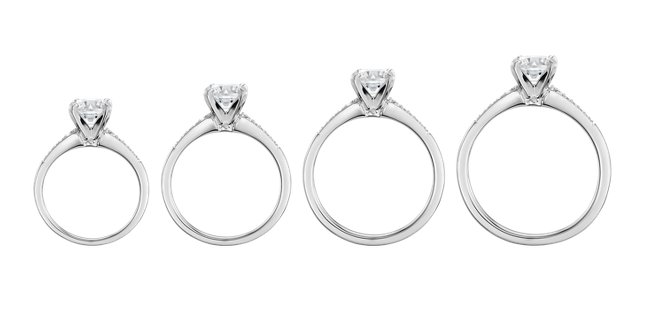
HOW DO JEWELERS MAKE RINGS BIGGER OR SMALLER?
Once you’ve decided that your ring size isn’t just right, what happens next? If it’s too large, a jeweler will cut off a small part of the shank and then reattach the ends by soldering. This works on many rings. Elements such as delicate stones and materials, thin rings, inset stones, and eternity bands usually can’t be sized down.
Making your band larger is a similar process; the jeweler will make a cut and add additional metal to the band. The ring is pulled apart, and the same precious metal as the band is inserted, then the bridge is soldered into place.
Stretching the band is another option, but we recommend against it because the process thins the metal band and can distort the shape of the ring.
We understand that getting the right ring size the first time can be tricky, especially if you want to keep your proposal a surprise. This is exactly why we offer free ring resizing on all customized engagement rings for up to a year after purchase.
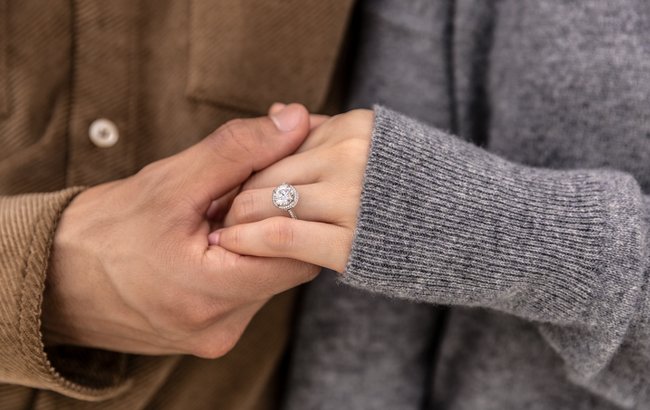
WHAT IF MY RING CAN’T BE RESIZED?
As we mentioned, some rings just can’t be resized. We accept returns on engagement rings—even if the reason for return is that it’s the wrong size. But if you’re proposing with your own ring or have one that can’t be resized, there are still some good alternatives. Our diamond experts have three suggestions that can give you a tighter fit. Sizing up, however, still requires a jeweler’s touch.
1. Use a temporary ring guard, plastic resizer, or spacer
Ring guards are rubber or plastic tubing or bands that take up space and decrease your ring’s size. They’re a cheap and easy solution but largely a temporary fix because they can damage and warp your ring over time, especially if they aren’t replaced daily.
2. Try sizing beads
Sizing beads are another thrifty option. The tiny beads attach inside your ring band, helping to lessen the gap between your ring and finger. Downside? They can be uncomfortable, so sizing might take some trial and error. Just as ring guards, they are often a short-term solution.
3. Add a tighter-fitting ring
You could also add a second, tighter-fitting ring to help keep your engagement ring in place. A well-fitting, complementary ring can hold the original one on your finger. They also tie into the stacking ring trend, which is a great pro for a resizing alternative.
If you have a ring that doesn’t fit just right or any other questions about ring resizing, reach out to our diamond experts any time, day or night.



